(354) Firefly Hunting (1)
文字数 3,966文字
“Kari(狩り)” means to hunt birds or beasts, but in Japanese, there are expressions like “cherry blossom hunting”, “autumn leaf hunting”, and “firefly hunting” that have lost the original meaning of “hunting”.
"Cherry blossom hunting" and "autumn leaf hunting" are terms that have been used since the Heian period, meaning “to break branches off and take them home”.
“Firefly hunting” is a term that has been around since the late 17th century and meant catching fireflies. Today, “hunting” in “cherry blossom hunting,” “autumn leaf hunting,” and “firefly hunting” means “viewing”.
There are more than 2,000 firefly species in the world, but most are terrestrial and only about 10 are aquatic. Fireflies can also be seen in seasons other than summer.
The Genji firefly (Luciola cruciata), a representative firefly species in Japan, is aquatic (living in bodies of water), and its larvae live in the middle reaches of rivers and feed only on conch called Semisul cospira libertinas (カワニナ). In the Kanto region, they grow wings and fly from May to June.
The Heike firefly (Luciola lateralis) lives in still water areas, and its larvae prey on not only Semisul cospira libertina (カワニナ) but also radix auricularia (モノアラガイ) and river snails(タニシ), adapting to slightly eutrophic environments. Because they have gills but can also breathe air, they can live in mud. In the Kanto region, they emerge from May to September.
The larvae of the terrestrial Himebotaru (Luciola parvula) live in forests and eat snails. This species is distributed mainly in western Japan and is not found in the Kanto region.
Until about 30 years ago, fireflies were widely seen along the Hanamuro River in the Tsukuba area, but their numbers have decreased recently.
★ ★ ★ ★
<about “Jikkoku Neighborhood Park Firefly Club” (実穀近隣公園ほたる野会)>
From October 2013, "Jikkoku Neighborhood Park Firefly Club" started activities to revive the Heike fireflies that were flying around the waterside around the Jikkoku Neighborhood Park. Every year, fireflies are cultivated from August to May of the following year, the larvae are released in June, and fireflies are viewed in July and August.
The members of the club are taking advantage of the town's foster parent system to improve the environment of the park, exterminating crayfish, which are natural enemies of fireflies, and artificially breeding and releasing firefly larvae.
In July 2015, the firefly population was revived, and fireflies can be seen every year since then.
Jikkoku Neighborhood Park Firefly Field Association PR Ami No.669 2016/12 p.23
https://www.town.ami.lg.jp/cmsfiles/contents/0000002/2674/web161125all.pdf
Jikkoku Neighborhood Park Firefly Field Association
https://www.youtube.com/watch?v=4jgeqAEfcpU
★ ★ ★ ★
In this chapter, I’d like to introduce the photos from when we visited Jikkoku Neighborhood Park in May, and the photos of fireflies Dad took on a night in July.
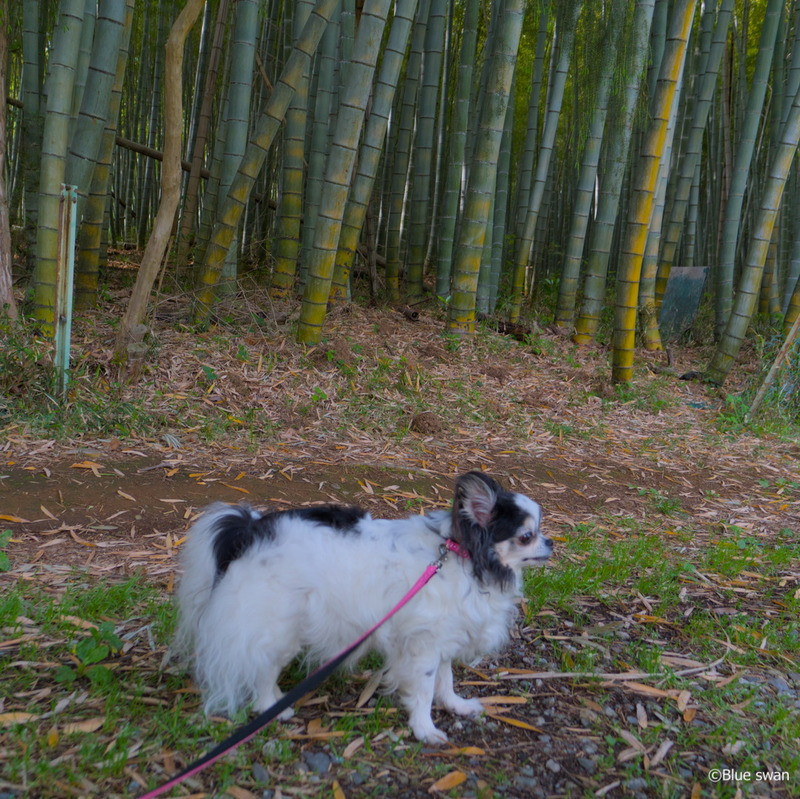
① From the parking lot, I'll follow the path in the bamboo grove. (photographed in May)
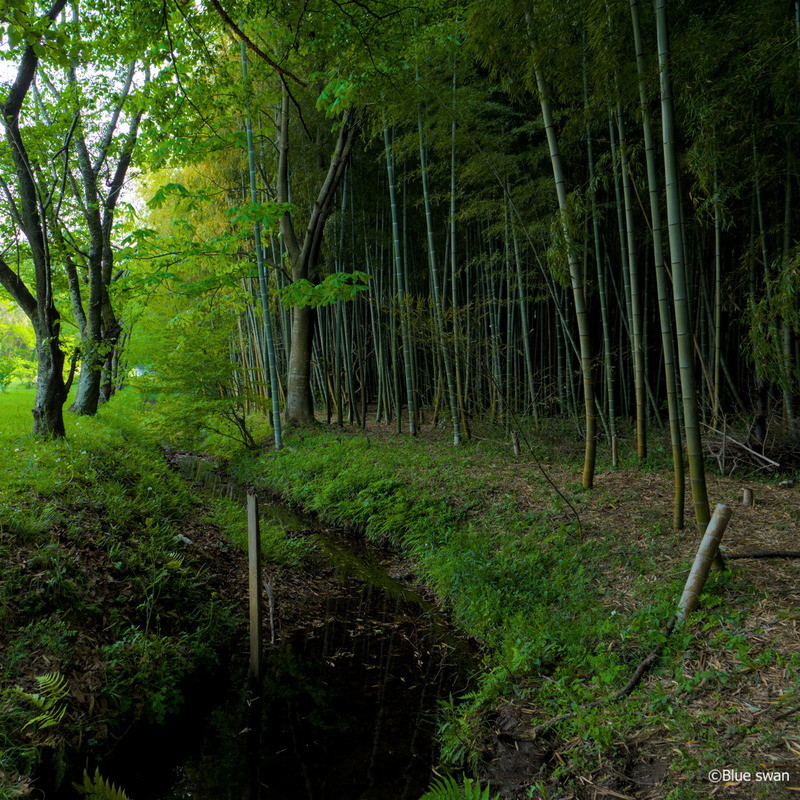
② The bamboo grove ends at the stream, and the left side is the lawn area of the park. (in May)
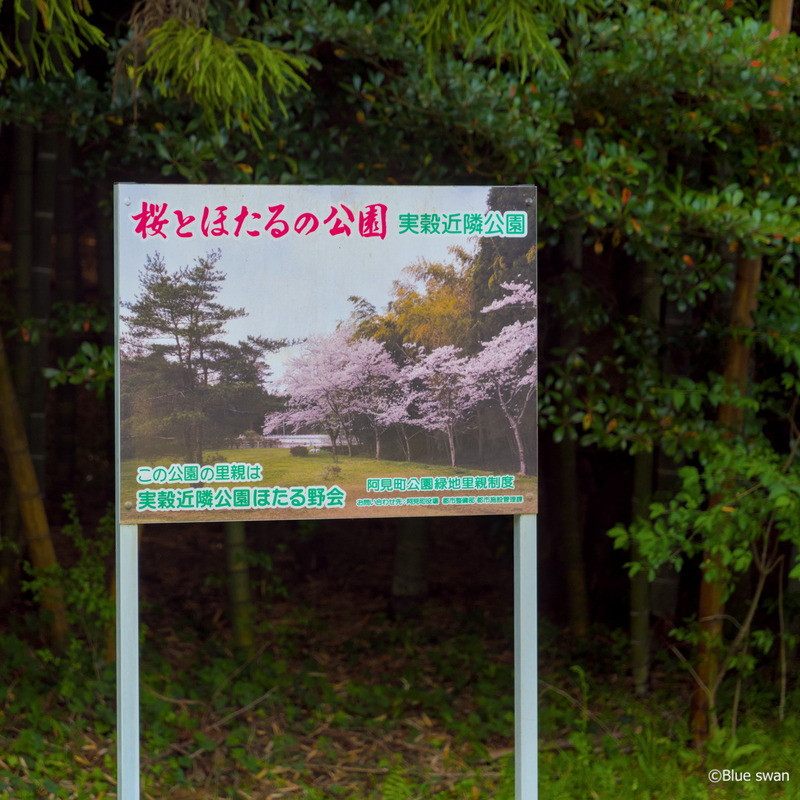
③ In front of the stream, there is a signboard, saying "Park with cherry blossoms and fireflies ~ Jikkoku Neighborhood Park". (in May)
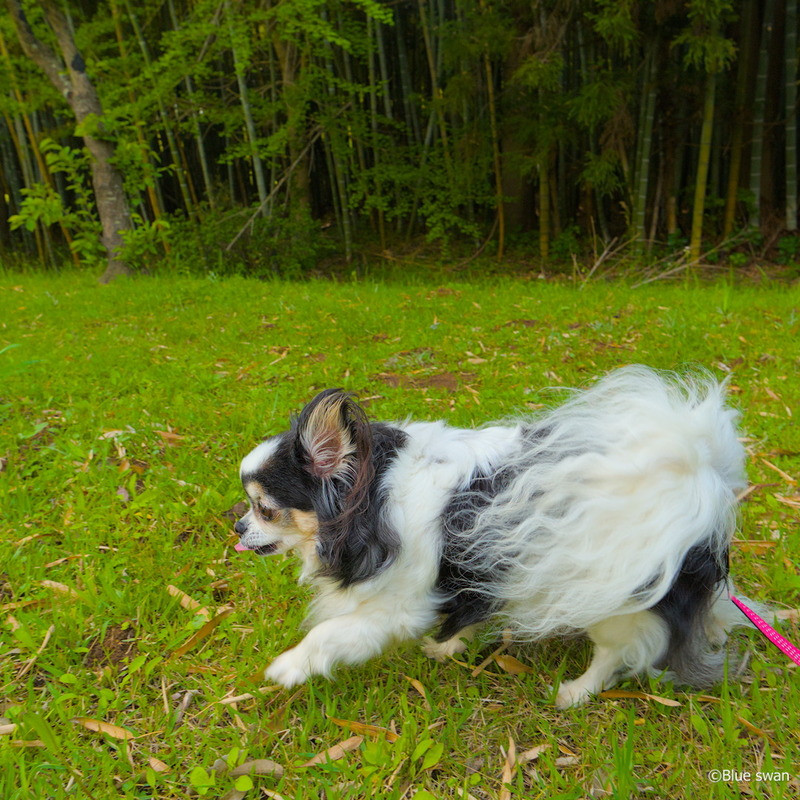
④ I went along the stream. (in May) There were no fireflies around this stream when Dad came in July.
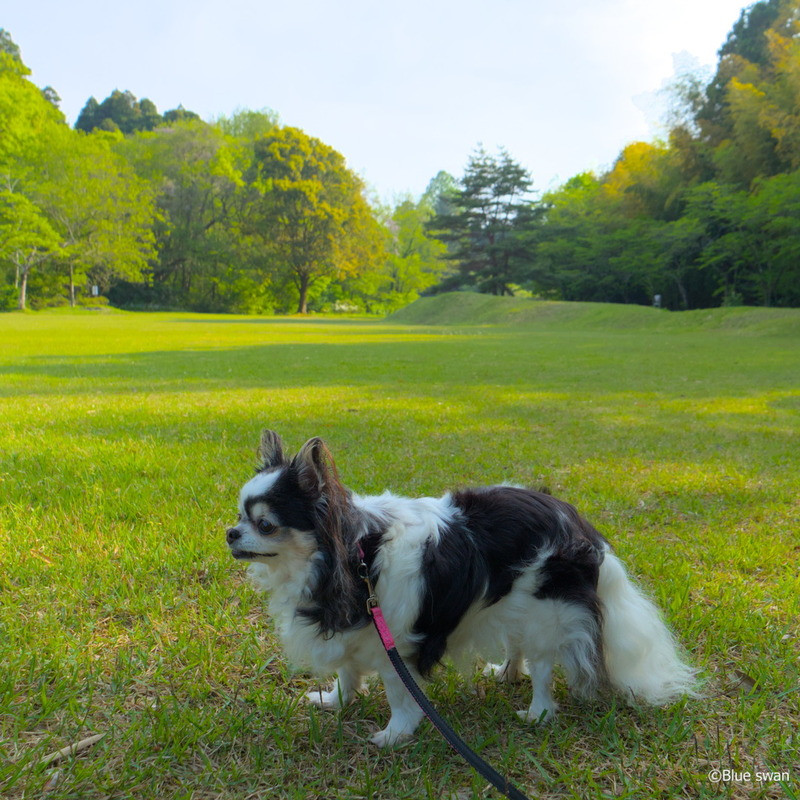
⑤ The lawn square is amazingly comfortable. (in May)
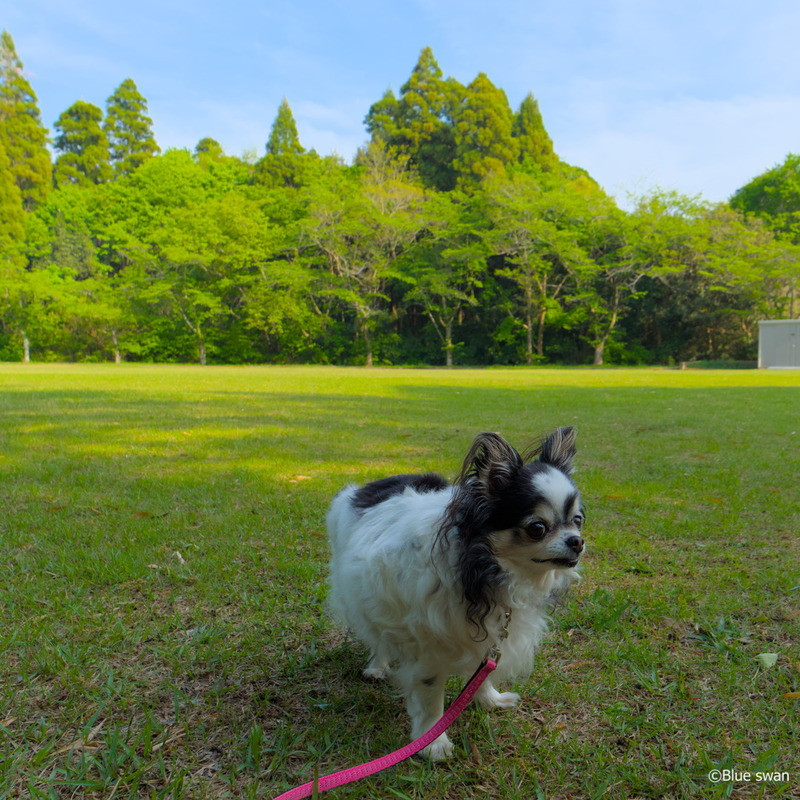
⑥ I’m resting on the lawn square. (in May)
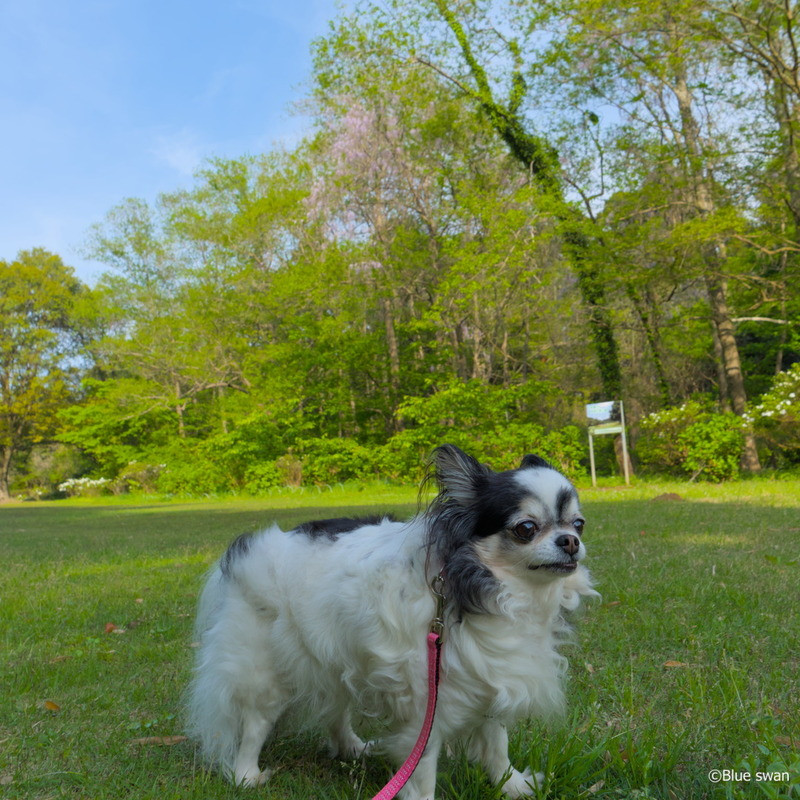
⑦ We've come to the end of the park opposite from the parking lot. Mountain wisteria flowers are blooming. (in May)

⑧ You can see another signboard of "Jikkoku Neighborhood Park Firefly Club" in the upper left. (in May)
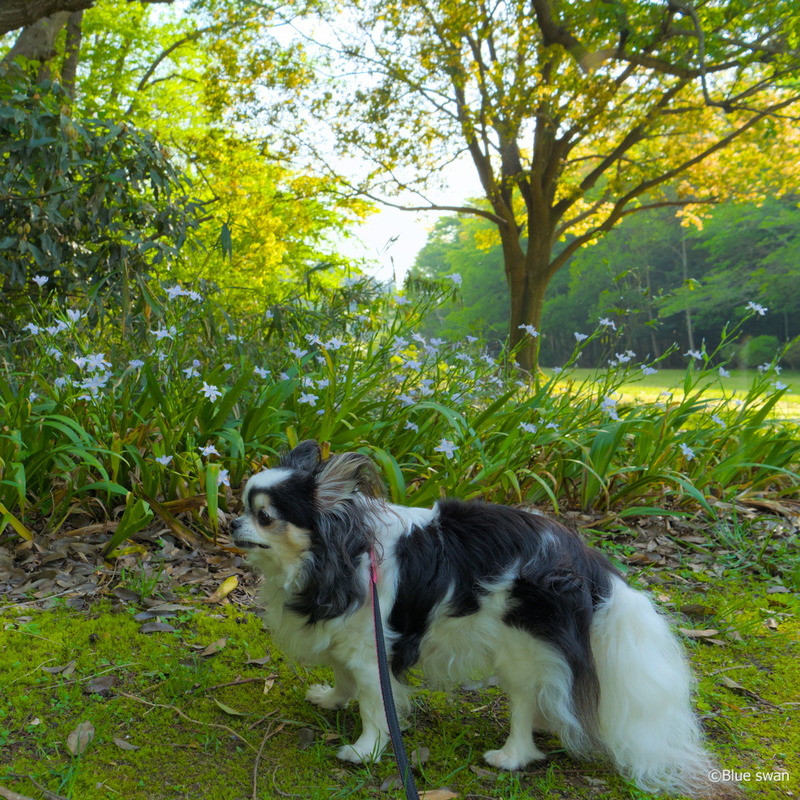
⑨ The fringed iris (Shaga) are blooming. (in May)
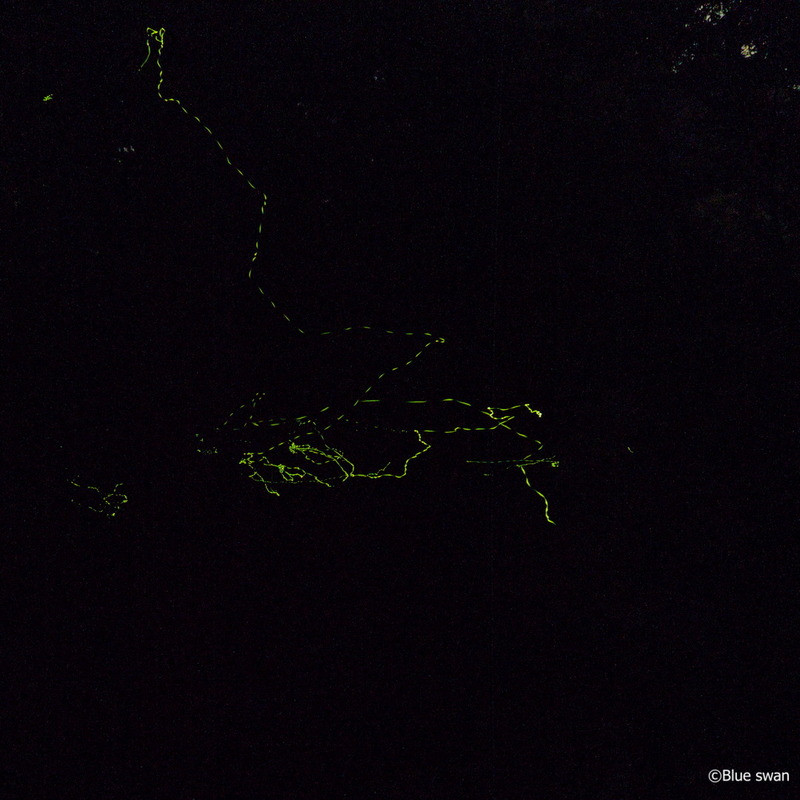
⑩ This is a photo of Heike fireflies photographed in the park in July.
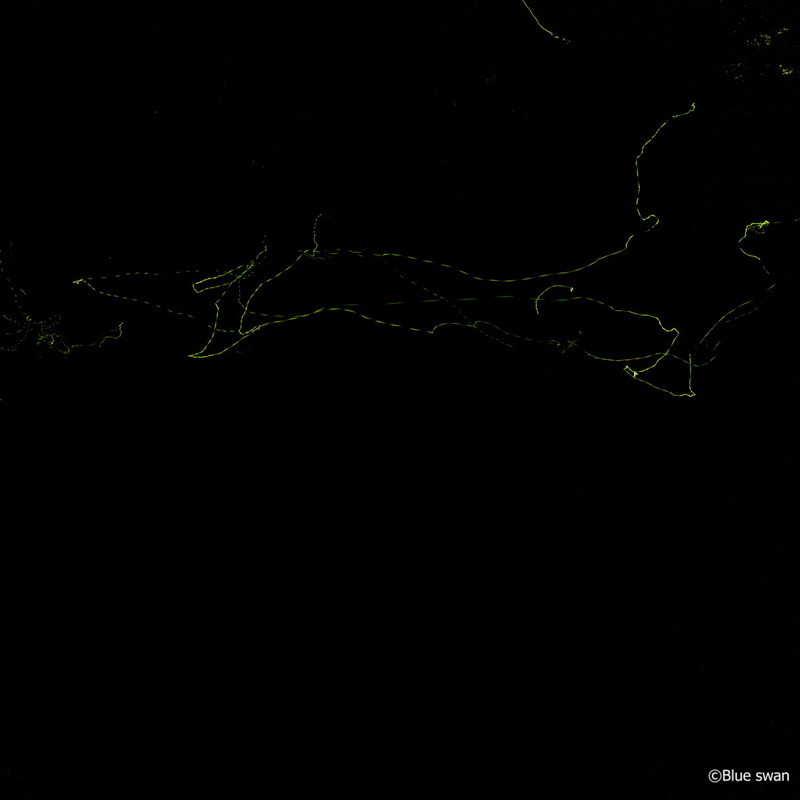
⑪ This is a photo of Heike fireflies photographed in the park in July.

⑫ This is a photo of Heike fireflies that stay in the grass near the park. (in July)
"Cherry blossom hunting" and "autumn leaf hunting" are terms that have been used since the Heian period, meaning “to break branches off and take them home”.
“Firefly hunting” is a term that has been around since the late 17th century and meant catching fireflies. Today, “hunting” in “cherry blossom hunting,” “autumn leaf hunting,” and “firefly hunting” means “viewing”.
There are more than 2,000 firefly species in the world, but most are terrestrial and only about 10 are aquatic. Fireflies can also be seen in seasons other than summer.
The Genji firefly (Luciola cruciata), a representative firefly species in Japan, is aquatic (living in bodies of water), and its larvae live in the middle reaches of rivers and feed only on conch called Semisul cospira libertinas (カワニナ). In the Kanto region, they grow wings and fly from May to June.
The Heike firefly (Luciola lateralis) lives in still water areas, and its larvae prey on not only Semisul cospira libertina (カワニナ) but also radix auricularia (モノアラガイ) and river snails(タニシ), adapting to slightly eutrophic environments. Because they have gills but can also breathe air, they can live in mud. In the Kanto region, they emerge from May to September.
The larvae of the terrestrial Himebotaru (Luciola parvula) live in forests and eat snails. This species is distributed mainly in western Japan and is not found in the Kanto region.
Until about 30 years ago, fireflies were widely seen along the Hanamuro River in the Tsukuba area, but their numbers have decreased recently.
★ ★ ★ ★
<about “Jikkoku Neighborhood Park Firefly Club” (実穀近隣公園ほたる野会)>
From October 2013, "Jikkoku Neighborhood Park Firefly Club" started activities to revive the Heike fireflies that were flying around the waterside around the Jikkoku Neighborhood Park. Every year, fireflies are cultivated from August to May of the following year, the larvae are released in June, and fireflies are viewed in July and August.
The members of the club are taking advantage of the town's foster parent system to improve the environment of the park, exterminating crayfish, which are natural enemies of fireflies, and artificially breeding and releasing firefly larvae.
In July 2015, the firefly population was revived, and fireflies can be seen every year since then.
Jikkoku Neighborhood Park Firefly Field Association PR Ami No.669 2016/12 p.23
https://www.town.ami.lg.jp/cmsfiles/contents/0000002/2674/web161125all.pdf
Jikkoku Neighborhood Park Firefly Field Association
https://www.youtube.com/watch?v=4jgeqAEfcpU
★ ★ ★ ★
In this chapter, I’d like to introduce the photos from when we visited Jikkoku Neighborhood Park in May, and the photos of fireflies Dad took on a night in July.

① From the parking lot, I'll follow the path in the bamboo grove. (photographed in May)

② The bamboo grove ends at the stream, and the left side is the lawn area of the park. (in May)

③ In front of the stream, there is a signboard, saying "Park with cherry blossoms and fireflies ~ Jikkoku Neighborhood Park". (in May)

④ I went along the stream. (in May) There were no fireflies around this stream when Dad came in July.

⑤ The lawn square is amazingly comfortable. (in May)

⑥ I’m resting on the lawn square. (in May)

⑦ We've come to the end of the park opposite from the parking lot. Mountain wisteria flowers are blooming. (in May)

⑧ You can see another signboard of "Jikkoku Neighborhood Park Firefly Club" in the upper left. (in May)

⑨ The fringed iris (Shaga) are blooming. (in May)

⑩ This is a photo of Heike fireflies photographed in the park in July.

⑪ This is a photo of Heike fireflies photographed in the park in July.

⑫ This is a photo of Heike fireflies that stay in the grass near the park. (in July)
